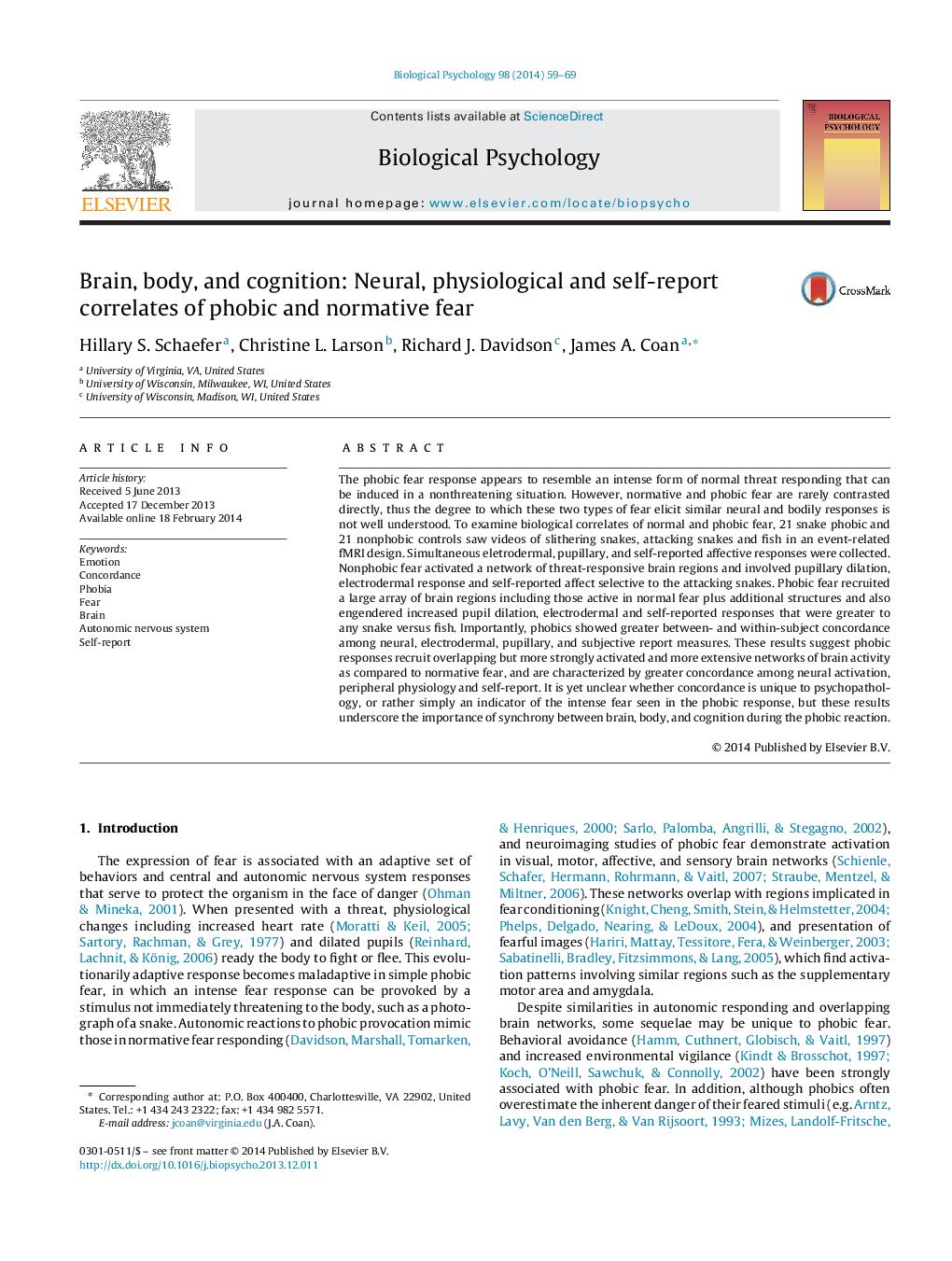| Article ID | Journal | Published Year | Pages | File Type |
|---|---|---|---|---|
| 920932 | Biological Psychology | 2014 | 11 Pages |
•We examined biological and subjective correlates of normative and phobic fear.•Included fMRI, EDR, pupil dilation, and self-report measures of affect.•Both normative and phobic fear increased activity in all affective measures.•Only phobic fear increased between- and within-subject concordance.
The phobic fear response appears to resemble an intense form of normal threat responding that can be induced in a nonthreatening situation. However, normative and phobic fear are rarely contrasted directly, thus the degree to which these two types of fear elicit similar neural and bodily responses is not well understood. To examine biological correlates of normal and phobic fear, 21 snake phobic and 21 nonphobic controls saw videos of slithering snakes, attacking snakes and fish in an event-related fMRI design. Simultaneous eletrodermal, pupillary, and self-reported affective responses were collected. Nonphobic fear activated a network of threat-responsive brain regions and involved pupillary dilation, electrodermal response and self-reported affect selective to the attacking snakes. Phobic fear recruited a large array of brain regions including those active in normal fear plus additional structures and also engendered increased pupil dilation, electrodermal and self-reported responses that were greater to any snake versus fish. Importantly, phobics showed greater between- and within-subject concordance among neural, electrodermal, pupillary, and subjective report measures. These results suggest phobic responses recruit overlapping but more strongly activated and more extensive networks of brain activity as compared to normative fear, and are characterized by greater concordance among neural activation, peripheral physiology and self-report. It is yet unclear whether concordance is unique to psychopathology, or rather simply an indicator of the intense fear seen in the phobic response, but these results underscore the importance of synchrony between brain, body, and cognition during the phobic reaction.
